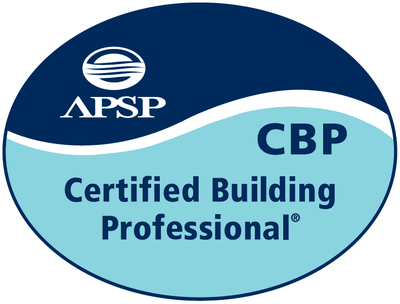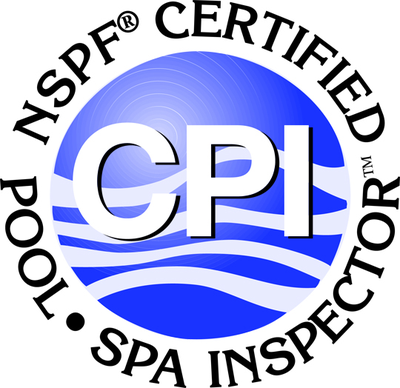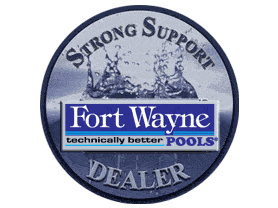What is the difference between free and total chlorine?
Free chlorine refers to both hypochlorous acid (HOCl) and the hypochlorite (OCl-) ion or bleach, and is commonly added to water systems for disinfection. When ammonia or organic nitrogen is also present, chloramines known as monochloramine, dichloramine, and trichloramine will quickly form. Chloramines are also known as combined chlorine.
Total chlorine is the sum of free chlorine and combined chlorine. The level of total chlorine will always be higher than or equal to the level of free chlorine.
Free chlorine is typically measured in drinking water disinfection systems using chlorine gas or sodium hypochlorite to find whether the water system contains enough disinfectant. Typical levels of free chlorine in drinking water are 0.2 - 2.0 mg/L Cl2, though levels can be as high as 5.0 mg/L.
Total chlorine is typically measured to determine the total chlorine content of treated waste water, often for discharge purposes. If you are required to measure and report chlorine levels to a regulatory agency, we advise that you check with your regulator to find whether you are required to measure free chlorine or total chlorine.
How accurate are test strips?
These are the easiest but require you to compare colors from a small test area to the side of the bottle. These are reported to be comparable in accuracy to the liquid drop tests but some believe they are not as accurate as DPD or liquid drop tests.
How often should I test my Pool or Spa?
You should test your pool or spa at a minimum of 2-3 times a week. A spa should be tested before each use due to the higher water temperature. Pool and Spa testing is also advised after heavy swimmer use (i.e party), after animals have been in the pool, after a heavy rain, after fertilizing, etc. It is also advised to test your pool or spa 24-48 hours after chemicals have been added to ensure accuracy in rebalancing.
What is pH?
pH is the intensity of acid or alkaline materials in the water of your pool or spa.
What can cause pH levels to fluctuate?
Many things can cause pH levels to change, including rainfall, dust, covering your pool or pool additives used.
What is Total Alkalinity?
Total Alkalinity measures the amount of alkaline substances (primarily bicarbonates and carbonates) in your water. Alkaline substances buffer your water against sudden changes in pH so that your water chemistry is more easily controlled.
What is Free Chlorine?
The purpose of a pool or spa disinfectant is not only to sanitize, but to disinfect and oxidize as well. Free Chlorine is the form of chlorine that is available in the water to do all three: sanitize, disinfect and oxidize. It is important to maintain Free Chlorine at a sufficient level to treat potential contaminants. If the Total Chlorine level exceeds the Free Chlorine level a super chlorination or "shock" is needed. This is because unwanted ammonia or nitrogen compounds have combined with Free Chlorine to make the sanitizer less effective and can cause a strong, offensive odor and swimmer irritation.
What is Cyanuric Acid (Stabilizer)?
Cyanuric Acid (sometimes called Stabilizer or Conditioner) makes Chlorine more stable in the sun's UV rays, acting like a sunblock for your sanitizer by keeping it from degrading as quickly as it would otherwise. Chlorine levels can drop from an ideal range to zero in less than two hours without Cyanuric Acid. If the Cyanuric Acid levels are too high it can cause Chlorine to be inefficient.
What is Total Hardness?
Total Hardness refers to the amount of Calcium or Magnesium in your pool or spa water. When Total Hardness is too high scale can form, causing pool filters or plumbing to clog and water to appear cloudy. If water is too soft, or low in Total Hardness, it will become aggressive and slowly dissolve plaster walls and corrode metal fixtures. Swimming pools and spas should have a Total Hardness of 250-500ppm.
What is algae?
Algae are microscopic plants and like all plants require nutrients. Algae obtain their food from leaves, plants and all organic matter (including swimmers).
Why does my pool have algae?
Algae can be caused by one or more of the following: no Free Chlorine available, poor or inadequate filtration, poor circulation (leaving "dead zones" of stagnant water), presence of elevated phosphates in the water, incorrect pH levels, excessive Cyanuric Acid/Stabilizer levels, or failing to test pool water regularly and adjust parameters.
How can I treat algae in my pool?
The treatment of algae depends on the type present in the water (black, green or yellow). Most algae blooms can be addressed with algaecide and/or shock treatment. However, this does not effectively treat all algae. Therefore, consult your pool or spa professional for treatment recommendations.
What are phosphates?
Phosphates are a main food source for algae or any other plant life. Phosphates are present in most plant and lawn fertilizers. Phosphates can be introduced to your pool or spa from various sources: fertilizer overspray or leching, plant remnants (such as leaves or grass clippings), animals in the water, precipitation, or the source water that is used to fill your swimming pool or spa.
My water has a foul, strong odor and when my kids swim they complain of itchy skin and burning eyes. What could be wrong with the water?
There may be a high level of combined Chlorine and/or a very low level of Free Chlorine. The first step is to get the pH level back in the ideal range of 7.2-7.8 ppm (pool). Secondly, add additional Chlorine or non-Cholorine shock to eliminate combined Chlorine. Water reentry can occur when Free Chlorine levels drop below 5ppm.
What is scale formation?
Scale formations are crusty, white deposits on pool surfaces that signal a high level of pH, Calcium Hardness, or Total Alkalinity, or low levels of hardness. The scaling may not only make pool surfaces rough, but can form on pool components and decrease water flow in filter/plumbing systems. The first step is to decrease pH and Total Alkalinity, since the Calcium Hardness is more difficult.
Why is my pool or spa water cloudy?
There are several reasons why pool or spa water can be cloudy: no Free Chlorine available, incorrect pH or Total Alkalinity, inadequate poor filtration, failing to test regularly, or an Algae infestation.
How do I clean my filtration system to see if it causing cloudy water?
It is recommended to backwash the system first to see if this adjusts pressure back to normal operational level, then clean the filter according to manufacturer directions. If you have additional questions regarding filter maintenance, consult your local pool or spa professional.
Why add Chlorine to a salt water pool?
A salt-water chlorinator is designed to maintain residual Chlorine by dosing small amounts of Chlorine into the water when the filtrating system is on. At times of heavy use, the cell needs cleaning, heated pool water, or inadequate amounts of Cyanuric Acid/Stabilizer acid levels the chlorinator may struggle to maintain those residual levels. The extra dose of Chlorine helps the chlorinator during thse conditions.
Can I use Chlorine in my Biguanide Pool?
No.













